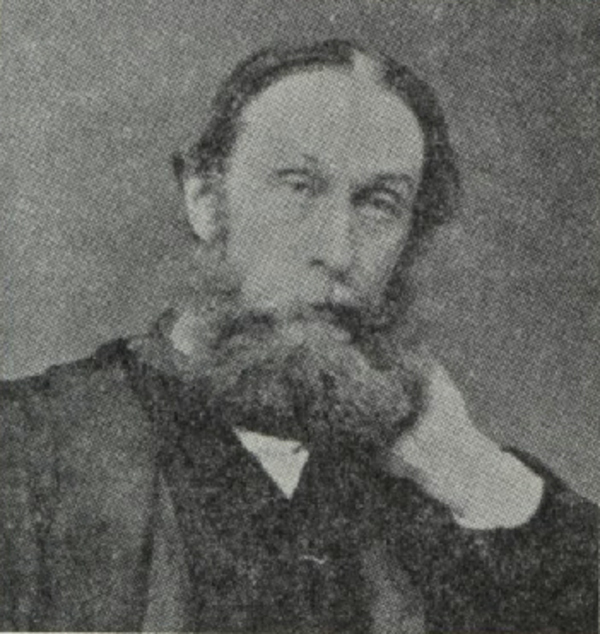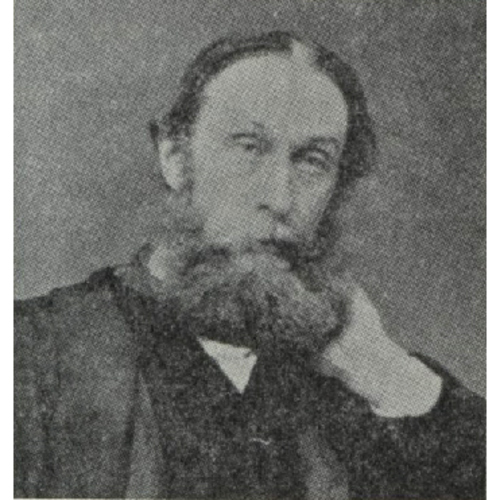
Source: Link
CHERRIMAN, JOHN BRADFORD, university professor, mathematician, and civil servant; b. 26 April 1823 in Doncaster, England, son of John Cherriman and Margaret Walker; m. 12 June 1858 Julia Malone in Pimlico (London), England; d. 10 June 1908 in England.
A quartermaster in the 11th Light Dragoons, John Cherriman went on half pay in 1814 and by 1823 had settled in Doncaster, where John Bradford Cherriman attended Doncaster School. He entered St John’s College, Cambridge, in 1841 and graduated as sixth wrangler in the mathematical tripos four years later. From 1845 to 1847 he was assistant master at Sedbergh School. He then received his ma at Cambridge in 1848. He had apparently considered taking holy orders but did not proceed with this plan.
In October 1850 he was appointed assistant professor of mathematics at University College, Toronto. At Toronto he found a fledgling community of like-minded supporters of science in the Canadian Institute, including John Henry Lefroy*, director of the local magnetic and meteorological observatory. Since imperial funding for the observatory was about to be discontinued, Lefroy hoped to persuade the government of the Province of Canada to undertake this financial responsibility and appoint a new director. In 1853 his campaign succeeded, and Cherriman replaced Lefroy provisionally. One of his first tasks was to help Egerton Ryerson*, chief superintendent of education for Upper Canada, to organize and equip a network of meteorological stations at grammar schools.
That same year, on the death of Robert Murray*, Cherriman was promoted to the chair of mathematics and natural philosophy at the University of Toronto. In 1855 a more permanent solution for the observatory was found. A chair of meteorology was established at University College, with two-thirds of the salary to be paid by the University of Toronto for teaching, and the remainder by the government for directing the observatory. Cherriman was to take the new position, and the older chair was to be filled by his brother-in-law, George Templeman Kingston*. When poor health made the observatory duties increasingly arduous for Cherriman, the positions were reversed in August 1855.
Cherriman’s publications, almost exclusively in the Canadian Institute’s Canadian Journal, on whose editorial board he sat for years, reflect both his training in mathematical analysis and his growing interest in its practical application to the social sciences. He harboured enormous faith that analytical methods, especially the new field of probability theory, would provide the tools “to effect perhaps the greatest social changes that the world has yet seen.” Natural philosophy – a far more amorphous field of physical sciences (heat, optics, electricity, magnetism, mechanics, hydrostatics, pneumatics, acoustics, astronomy) – remained for Cherriman a teaching field; here he published mainly field reports on astronomical and meteorological observations, as well as texts on mechanics for students.
In keeping with his primary interests, Cherriman left the university in 1875 to become an actuary. On 1 July he took up the federal position of superintendent of insurance, newly created in response to public pressure by the government of Alexander Mackenzie*. Placed under the Department of Finance, the office administered the regulation of federally chartered fire and inland-marine insurance businesses in Canada; life insurance was added to the charge two years later. Cherriman’s lengthy annual reports reflect the enthusiasm with which he generated and analysed detailed statistical tables to meet these new responsibilities.
During his years at the University of Toronto, Cherry, as he was known by his students, had served as a lieutenant and captain in the university rifle corps formed during the Trent affair in 1861 and called up again during the Fenian raids in 1866 [see Alfred Booker*; Henry Holmes Croft*]. A master chess player, he edited a chess magazine and organized a local club. He was also a noted flautist (he participated in the university’s Philharmonic Society), a long-standing freemason, and a charter-member in 1882 of the Royal Society of Canada, in whose Transactions he published papers on mathematical and chess problems until his retirement and return to England in 1885. One of his last professional contributions was to participate, with Charles Carpmael* and others, in a sub-committee of the British Association for the Advancement of Science, which met in Montreal in 1884, to promote government support for tidal observations on the Atlantic coast.
A chronological listing of most of Cherriman’s publications can be found in Science and technology biblio. (Richardson and MacDonald). In addition, his writings include “On Kirkwood’s analogy,” American Journal of Science and Arts (New Haven, Conn.), 2nd ser., 14 (November 1852): 9–10; “On the American ten-year non-forfeiture policy” in Institute of Actuaries, Journal and Assurance Magazine (London), 16 (1869–70): 384–86; and several brief notes on actuarial topics in the same publication, 21 (1869–70): 295–300. The list also omits his book reviews; of particular importance are those of David Brewster, Memoirs of the life, writings, and discoveries of Sir Isaac Newton, and Augustin Cournot, Recherches sur les principes mathématiques de la théorie des richesses, in the Canadian Journal (Toronto), new ser., 1 (1856): 452–64, and 2 (1857): 185–94, respectively. His annual reports as superintendent of insurance for 1875 to 1884 are available in Can., Parl., Sessional papers, 1877–85.
Church of Jesus Christ of Latter-day Saints, Geneal. Soc. (Salt Lake City, Utah), International geneal. index (copies at the Toronto branch of the church’s Geneal. Library). PRO, WO 25/753: ff.65–65v. St John’s College, Univ. of Cambridge, Eng., File information on J. B. Cherriman. Alumni cantabrigienses . . . , comp. John and J. A. Venn (2 pts. in 10v., Cambridge, 1922–54), pt.ii, 2: 23. British Assoc. for the Advancement of Science, Report of the annual meeting (London), 1886: 150–51. CPG, 1885. R. W. Dimand, “An early Canadian contribution to mathematical economics: J. B. Chemman’s 1857 review of Cournot, Canadian Journal of, Economics (Toronto), 31 (1988): 610–16. E. P. Neufeld, The financial system of Canada; its growth and development (Toronto, 1972). J. A. Paterson, “John Bradford Cherriman: an appreciation,” University Monthly (Toronto), 9 (1908–9): 77–83. J. L. Richards, Mathematical visions: the pursuit of geometry in Victorian England (Boston, 1988). Suzanne Zeller, Inventing Canada: early Victorian science and the idea of a transcontinental union (Toronto, 1987).
Cite This Article
Suzanne Zeller, “CHERRIMAN, JOHN BRADFORD,” in Dictionary of Canadian Biography, vol. 13, University of Toronto/Université Laval, 2003–, accessed January 22, 2025, https://www.biographi.ca/en/bio/cherriman_john_bradford_13E.html.
The citation above shows the format for footnotes and endnotes according to the Chicago manual of style (16th edition). Information to be used in other citation formats:
| Permalink: | https://www.biographi.ca/en/bio/cherriman_john_bradford_13E.html |
| Author of Article: | Suzanne Zeller |
| Title of Article: | CHERRIMAN, JOHN BRADFORD |
| Publication Name: | Dictionary of Canadian Biography, vol. 13 |
| Publisher: | University of Toronto/Université Laval |
| Year of revision: | 1994 |
| Access Date: | January 22, 2025 |



